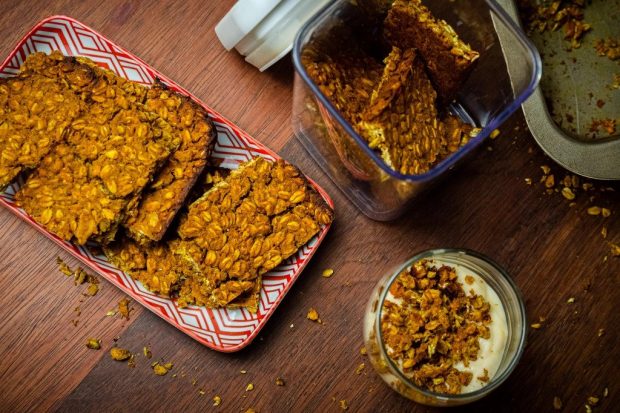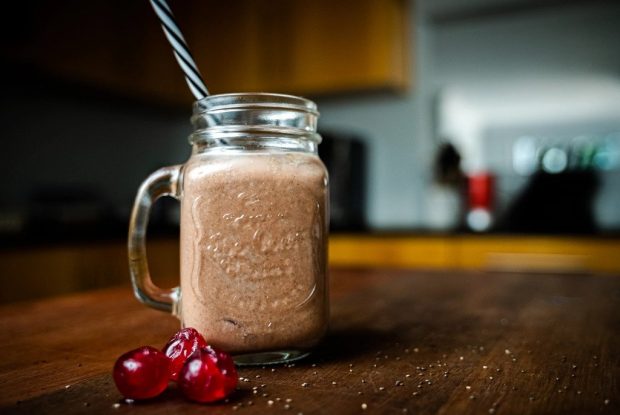Two years have passed since corporate employees around the world made a sudden, mass exodus from their workplaces. Today, there is a widespread return – some are back to a full 5-day week in the office, while others are implementing hybrid regimes. What everyone finds is that the culture, feel and rhythm of corporate life have been irrevocably changed.
The global pandemic acutely sharpened our focus on health and safety, and both employers and employees are bringing this heightened awareness into the workplace. The extended period of working from home enabled us to manage our health concerns and general wellness in our own time, in our ways during the working week.
Many people reported an improved work-life balance, as well as getting more physical exercise and finding it easier to eat healthily. These were cherished gains during extraordinarily challenging times – and we don’t want to lose them now that we’re transitioning from the work-from-home model.
Corporate Wellness: Eating Well
With Corporate Wellness in the spotlight during July, it’s a good opportunity for these company programs to be reinvigorated with their burgeoning return to the office. Typically, Corporate Wellness programs focus on providing health promotion and education, basic health assessments, and mental health support. However, due to the sedentary nature of office work and the large number of meals people eat at the office, these wellness programs need to also incorporate opportunities for daily physical activity and healthy nutrition.

shurkin_son/shuttersock
Nelile Nxumalo is a Registered Dietitian and spokesperson for ADSA (The Association for Dietetics in South Africa). She outlines the basics of what Corporate Wellness programs can provide to enable employees to focus on healthy eating choices.
“Employees need to have lunch and tea breaks, and places where they can sit and eat with their colleagues, away from their desks. This avoids a rushed meal that could potentially lead to unhealthy eating habits such as skipping meals but over-consuming calories as you’re always snacking instead of eating a nutritious meal.”
Eating well in the office
Nelile advises:
- Canteen menus should offer healthy meal options incorporating salads, vegetables, fruits, lean proteins, whole grains, and high fiber and unrefined carbohydrates. Calorie-dense meals, including highly processed foods and unrefined carbohydrates, should be avoided.
- Vending machines or tuck shops should offer healthy snack options. These can include items such as homemade popcorn, unsalted nuts, raisins, dried fruits, lean biltong, and crackers. Veggie crudites and a variety of dips like hummus and tzatziki are also better options than chocolates, sweets, and crisps.
- Facilities should be available for staff to store meals or lunchboxes at appropriate temperatures to prevent spoiling.
Nelile adds that the Corporate Wellness program can advocate for bringing healthy homemade meals and avoiding buying take-aways. To support employees, it would help to provide microwaves or other kitchen equipment to warm up food. Home-cooked meals often have fewer calories and are more nutrient-dense than take-away or convenience foods.
Educating your employees about healthy eating
Registered dietitian, Raeesa Seedat, recommends that Corporate Wellness programs include nutrition education in their promotion of healthy lifestyles for their employees.
“Research suggests that when employees begin a wellness programme with a positive intention at the outset, they are more likely to sustain lifestyle behaviours such as healthy eating, physical activity and stress management.”
Seedat adds that training using relevant and validated tools can empower employees to make better choices for their health and optimize outcomes.
“Ideally, a dietitian should be consulted with regards to the composition of meals served at the staff cafeteria and give input on portion control. Catering for corporate events and meetings should also be focused on healthy eating principles.”
Making better food choices at the office
Regardless of what your company provides through its wellness program, healthy eating during workdays, in the end, about the food choices you make each day.
 Registered dietitian Jandri Barnard says:
Registered dietitian Jandri Barnard says:
“It’s important to avoid the pitfalls of just grabbing something quick to eat for a rushed workday lunch because all too often that’s likely to be highly processed or fast foods that are calorie dense but nutrient-poor. With planning and just a bit of time to shop and some preparation, you can set up an entire working week of healthy meals and snacks.”
Barnard adds that you shouldn’t focus only on food though because what you drink during the working day counts too. Instead, you should make a habit of leaving home with a water bottle – you can always add mint, cucumber, or lemon for flavor. Barnard also reminds you to limit your caffeine intake by choosing rooibos, fruit, and herbal teas when you want a warm drink and to avoid energy drinks and sugary soft drinks.
Jandri’s top tips for planning, shopping, and preparing workday lunches and snacks
- Planning, planning, planning! – Plan meals for the week before going shopping and buy only the ingredients you need
- Leftovers help – You can consider making an extra portion of your evening meal as leftovers for your work lunch the following day. Remember to keep pre-prepared meals at appropriate temperatures to prevent spoilage
- Dishes that are cooked the evening before or leftover meals need to be cooled down properly and packaged in containers that can be reheated again, if necessary
- Pre-prepare lunches, and even breakfasts, beforehand on the weekends or in the evenings
- Smoothies can be prepared in the mornings before work, but get the ingredients ready the evening before
- Pre-pack snacks such as whole-wheat crackers, bran muffins, unsalted nuts, seeds, lean biltong, and dried fruit to pop into your bag for work
- Vegetable crudités or fresh fruit slices can also form part of your work snack box
- Keep water bottles filled and have extra herbal or fruit tea bags ready for your workday
- Sandwiches and wraps can be prepared in the mornings – or the evenings before if you have time constraints in the morning. However, rather pack fresh produce such as tomatoes and cucumbers separately and add these later, as they can make the bread or wrap soggy and unappetizing
- Use whole-wheat or low GI bread, rolls, or wraps rather than refined white flour products which will result in you being hungrier sooner in the day
- Remember that avocado turns brown due to the oxidation process when it is exposed to oxygen. To prevent this, add a sprinkle of olive oil or squeeze some lemon juice over your sliced or mashed avocado. Then you still have green avocado to add to your salad or sandwich at lunchtime.
Easy recipes for workday meals
Here are three, dietitian-approved, easy recipes that are ideas for workday meals/snacks:
1. Peanut Butter Spice Granola/Bar
As a bar, this is a spicy, fiber-rich on-the-go snack to enjoy while commuting or in-between meetings. The granola version can be combined with yogurt or drinking yogurt for a workday breakfast or lunchbox alternative. This snack or meal has a lower glycemic index to prevent blood sugar spikes and feeling an afternoon slump.
Amount of servings: 8 Servings
Preparation time: 10 Minutes
Cooking time: 45 minutes
Total Time: 55 Minutes

Peanut Butter Spice Granola/Bar
Ingredients:
- 2 cups rolled oats
- 1/3 cup no-added sugar Peanut butter
- 100 g Pitted Dates
- 1 teaspoon Cinnamon
- 1 Medium Apple
- 100 ml Boiled water
- 1 Teaspoon Vanilla
- 1 Teaspoon Turmeric
- Pinch of Salt
Method:
- Preheat the oven to 180 C.
- Add the peanut butter, dates, apple, boiled water, and vanilla to a blender and blend until smooth.
- Mix the rolled oats, cinnamon, turmeric, and salt in a separate bowl.
- Add the peanut butter mixture to the oats until well combined.
- Spread out the mixture on a greased baking tray, and bake for 45 – 50 minutes until light brown and crispy.
- Let it cool down and store it in an airtight container.
Additional Advice
This recipe can be enjoyed in different ways! For delicious Granola bars, press the mixture into an oven-proof dish and bake for 45 – 50 minutes. Cut into bars and let it cool off. Enjoy it as a snack or breakfast on the go!
Top tip: Enjoy this tasty granola with some yogurt to increase the protein content of the meal, as well as a portion of fruit to up the fiber.
2. Black Forest Smoothie bowl
An antioxidant morning booster, which can be used as a vegan or dairy-free breakfast option if cottage cheese is excluded. It is fiber-rich with oats and chia seeds to reduce your risk of developing heart disease.
Ingredients:
- 100g frozen cherries
- 1 tbsp chia seeds
- 80ml almond milk
- 1 tbsp smooth fat-free cottage cheese
- 70g cooked, cooled oats (20g raw)
- 1 tsp cocoa
- 1 tsp raw honey
- Handful of ice

Black Forest Smoothie bowl
Method:
Blend, top with sliced cherries and enjoy!
3. Moroccan Spiced Lentil Salad with dried apricots and almond flakes
An easy, nutritious salad to pre-prepare for work or have as a loadshedding meal after work. This tasty salad is packed with vitamins, low-fat protein, and fiber with dried fruit, nuts, and spices for extra zing and comfort.
Prep: 15 Minutes
Serving: 1 Person
Ingredients:
- 20g Salad Leaves
- 80g Canned Lentils, rinsed
- ½ Red Onion chopped roughly
- 20g Dried Apricots, chopped roughly
- 1 Celery Stick, chopped
- 5g Almond Flakes
- 5g Herb Mix (coriander/flatleaf parsley/mint) chopped
- 10ml orange zest and juice
- 1 Fresh Chili (optional to taste)

Moroccan Spiced Lentil Salad with dried apricots and almond flakes
Moroccan Dressing
- 5ml Honey
- 5ml Olive Oil
- 10ml Red Wine Vinegar
- 1 Garlic Clove finely minced – use a garlic press (optional to taste)
- 2g Cumin
- 2g Cinnamon
- Pinch Ground Cloves
- Pinch Salt and Pepper (to taste)
Preparations
- Rinse the green leaves.
- Drain and rinse the lentils.
- Peel and chop the onion (if sensitive to onions, chop, and place in a bowl of cold, salted water).
- Chop the apricots.
- Chop the celery.
- Rinse the fresh herbs and chop roughly.
- Zest and juice the orange, leaving some segments to garnish.
- Deseed and finely chop chili (to taste).
Step 1 Place the green leaves in a large bowl topped with lentils, drained onions, apricots, celery, almonds, herbs, and orange zest. Squeeze with the orange juice.
Step 2 Taste, adjust salt and add chili to taste.
Step 3 Dress your salad with the dressing.


![women [longevity live]](https://longevitylive.com/wp-content/uploads/2020/01/photo-of-women-walking-down-the-street-1116984-100x100.jpg)










